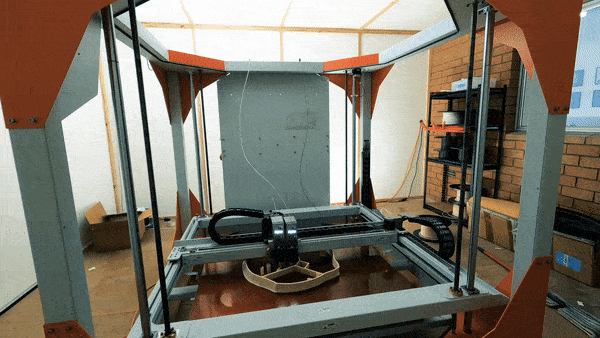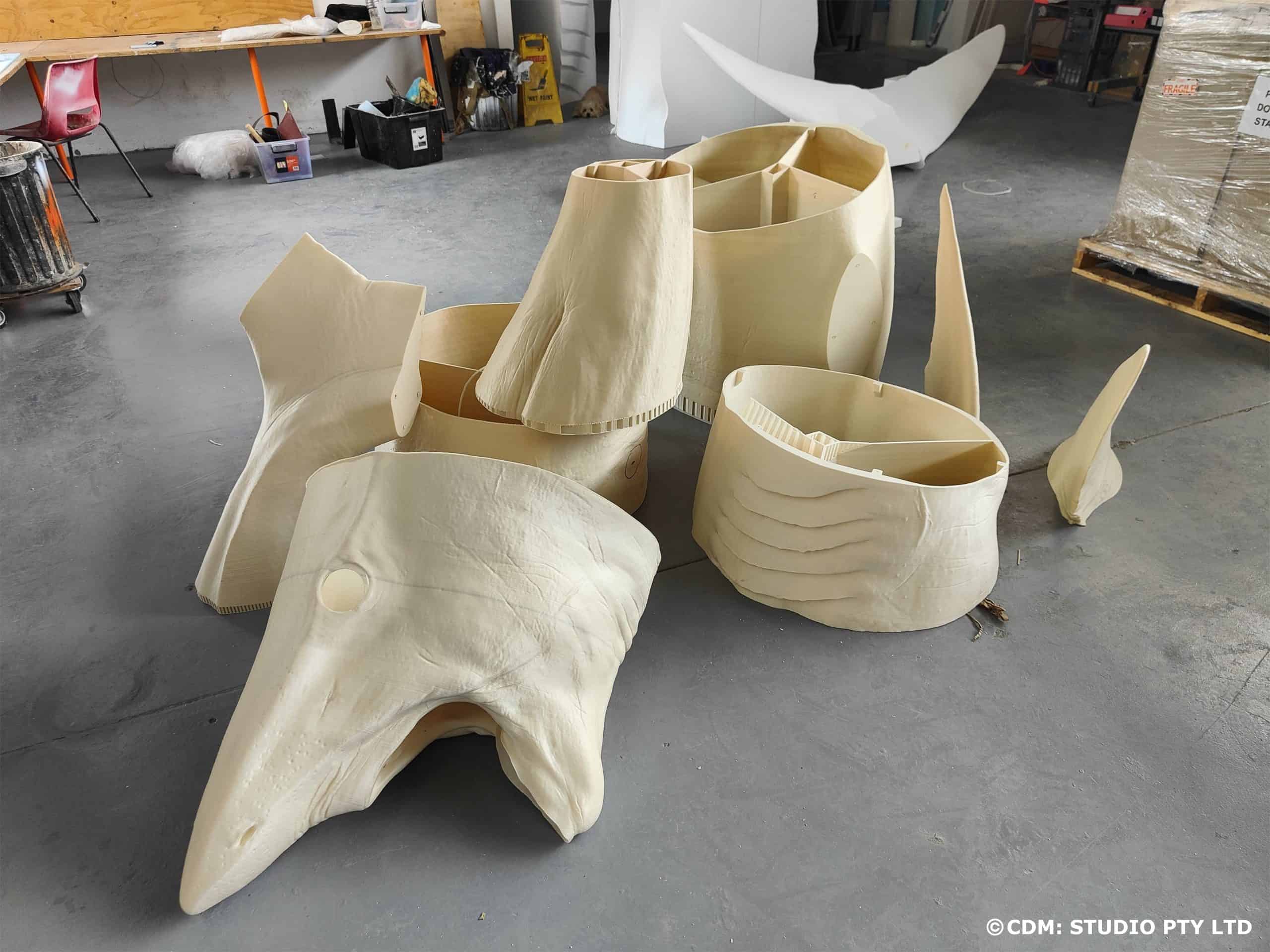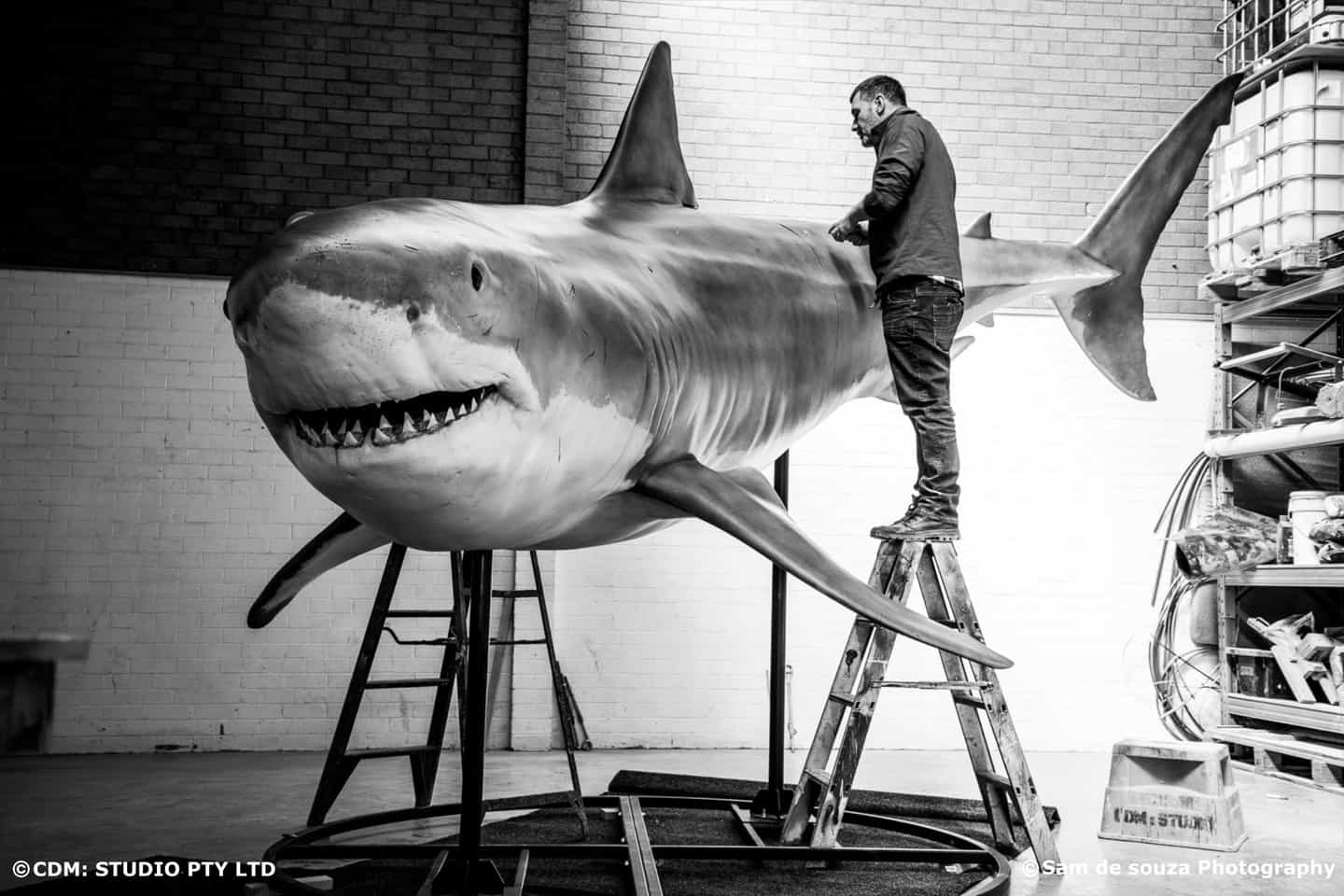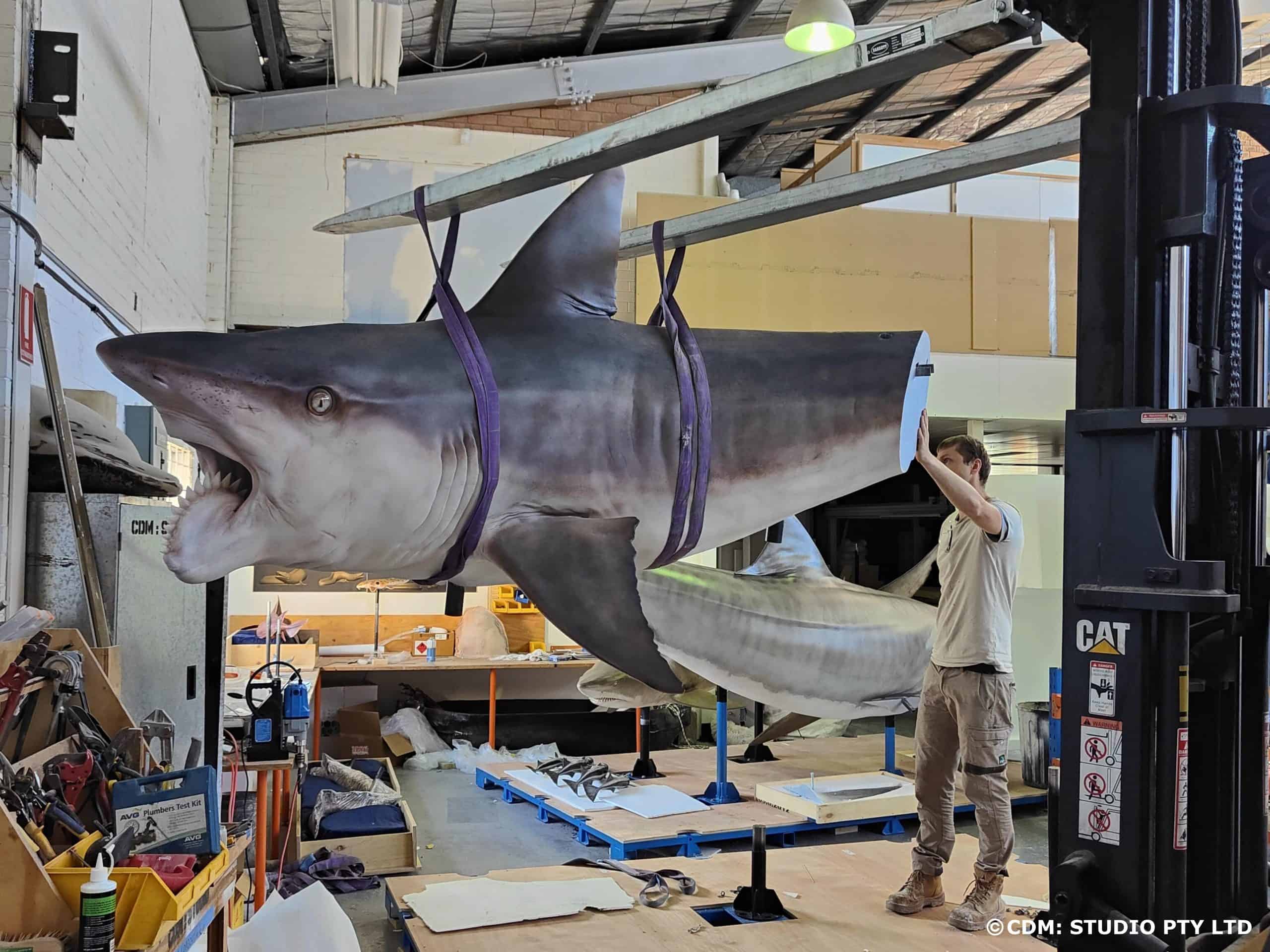Enhancing Traditional Mold-making with Additive Manufacturing
Jason Kongchouy and his Perth-based model-making team CDM:Studio previously brought the past to life with their dinosaur recreations, commissioned for the Western Australian Museum. But there are actually creatures far older than dinosaurs: Sharks! Sharks! is also the name of the latest exhibition from the Australian Museum in Sydney, fully immersing visitors into the world of these 190-million-year-old beasts. They used CDM:Studio thanks to their expertise, experience, and excellence in bringing ancient animals to life.
Traditional clay-making approaches to creating large-scale models can be long and cumbersome. This is where the BigRep ONE provides the perfect solution, allowing for rapid prototyping and printing, significantly reducing production times. We had the chance to talk to Studio Manager and Senior Fabricator at CDM:Studio Jason Kongchouy about his project, the challenges in creating some sharks with minimal references, and the types of materials he used.
Can you start by telling me a little bit about CDM:Studio and what they focus on?
CDM:Studio is our model-making studio based in Perth, Western Australia. We fabricate things and work on creative projects that other people wouldn't necessarily know how to get their head around. We mainly service museums, builders, architects, and designers in a fabrication capacity where we use the BigRep ONE, SLA machines, and a five-axis CNC arm. This is complemented by an extensive skill-set in mold-making and model-making techniques. We're not just a 3D print place, but it's a means to an end to solve these problems for people.
"There was a lot of complicated work that we wouldn't know how to do without the BigRep ONE taking the stress off."
What problem does it solve for you?
A big part of it involves us sculpting digitally using a 3D-modeling program named ZBrush. We're currently doing stuff with more museums at the moment, which is all driven by 3D printing and making those parts one-to-one scale. We use all manner of technology at our disposal to make finished objects because the customer is not buying 3D-printed things. For us, printing is a step in our pipeline. We talked about similar models in the special effects industry before the interview. That used to be all clay and fiberglass, involving months of work. Now it's been replaced with a single 3D modeler and a machine that works 24/7 and takes all that physical strain off us. And in our industry, there is a lot of physical strain, which just exhausts you and creative output can fall as a project goes on. It drops after week six. But with a 3D file, whatever we slice and send to the BigRep, that's exactly what comes out. I think the museum likes that as well. A lot of what we do has to be approved. So we can send the 3D file to the scientists, they can look at it, and they can send it to experts to check it all over the world.

Is it easier to design a shark than a dinosaur? Because sharks, of course, are still around...
Yes, absolutely, but each still have their own challenges to navigate. All the sharks that we made are native to that part of Australia, so they had samples, teeth, and photographs. However, one of the interesting challenges is that no one takes a photo of a shark at a perfect angle so to digitally model them requires a good understanding of anatomy to get the correct proportions. It's hard to get the perfect shape. One of the models in the exhibition is a prehistorical predecessor of sharks called the Helicoprion. We only found a sawtooth mouth fossil, but our current model is where the science is with that creature. There's also a shark that lives deep in the ocean where there are only incredibly limited photos of it in the world, so our reference was a bit scarce, but it was still exciting to realize that as a physical model.
"We're not just a 3D printing service, but a means to an end solving problems for our customers."
How much time do you save using 3D printing instead of traditional clay modeling?
If nothing else was happening, you could print a shark, like the Great White or the Helicoprion, in about six weeks. From a business perspective, you would need a four to five-month window to do the same from a traditional clay-based pipeline. Having the printer frees us up to solve other problems on the projects and lets us focus our model-making skills on parts that are coming off the machine: gluing them together, sanding the surfaces, and covering them in epoxy. There was a lot of complicated work that would take significantly longer without the 3D printer taking the stress off. It helps us streamline and work much more efficiently.

What material do you use to print and why?
For this project, we use BigRep PRO HT. It was recommended to us for its high temperature resistance as it doesn't melt or go soft as easily as PLA. We know that after the exhibition finishes in Sydney, it could tour America or potentially Europe so hopefully, you'll see it one day. These will be traveling across the ocean or be left in super hot places like Arizona, so we needed something very durable like PRO HT. We also reinforced them with epoxy resin and fiberglass because people might touch them in the exhibition.
"These are going to be traveling across the ocean or left in super hot places like Arizona, so we needed something very durable and temperature-resistant like PRO HT."
Any final words about the BigRep ONE and ideas for the future?
For us, it's a really useful tool. I think capability-wise, the ONE is perfect for us. And we look forward to even more interesting projects that the BigRep enables us to service.

Interested in what the BigRep ONE can do for your business? Learn more about large-scale printing here.
